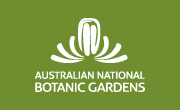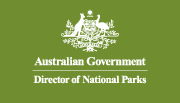Student’s Volunteer Botanical Internship Program 2012
Participants and Institutions
2012 represented the twentieth year that the Student’s Volunteer Botanical Intern Program (SVBIP) has been run. A total of twelve applications were received for the Program with ten interns representing seven universities successfully completing the Program.
Work Output
Output achieved by interns during 2012 was roughly equal to 61% of a year’s work (of an entry-level TO). Many supervisors provided positive feedback as to the accuracy and quality of the work achieved and the interns cheerful and enthusiastic approach.
Curatorial work included mounting and incorporation of vascular and non-vascular specimens, allocation of labels to specimens ready for mounting, and general herbarium tasks. Significant assistance was also provided to cryptogams with a number of curatorial tasks completed. Interns also provided assistance in the Herbarium library this year, auditing the collection’s michrofiche holdings against the digitised publications available online at the Biodiversity Heritage Library.
Along with curation work, interns provided research assistance to CANBR research scientists. Assistance was again provided to the Acacia, Asteraceae and Orchidaceae project research groups. Significant assistance was also proved to the ‘Molecular control of reproduction in weeds’ project with an impressive number of plants assessed for further analysis.
Fieldwork
Fieldwork in 2012 followed the well-established format of previous years. The first trip was a one-day drive led by Brendan Lepschi and Dave Mallinson, through sites around Queanbeyan, Captains Flat and Tallaganda State Forest, introducing them to many local species. This year Andrew Thornhill accompanied the interns allowing a greater focus to be placed on Eucalyptus species, in the spirit of the original one day Eucalyptus field trips. While the weather remained dry it was the coldest day of January. However, despite this the interns reported finding the day interesting and worthwhile.
The four-day residential field trip was held again at Jervis Bay. Interns surveyed a number of woodland and heath communities in Booderee National Park to practice their collecting techniques and acquire material to identify. A “Treasure Hunt” style mapping exercise was also conducted and was both enjoyable and enlightening. At Booderee Botanic Gardens Stig Pedersen discussed the history and significance of Booderee Botanic Gardens while Kain Ardler and A.J. Roberts led a Koori bush food and medicine tour around the Gardens. Booderee National Park staff, Matt Hudson and Martin Fortescue, conducted a tour of Bitou Bush control sites and discussed park and reserve management issues with the interns. In addition, interns visited the Mangrove Boardwalk at Huskisson, Fitzroy Falls and Barren Grounds Nature Reserve.
An extra field trip was taken this year. Nunzio Knerr and Rosemary Purdie, in collaboration with Louise Hufton from the Murrumbidgee CMA, led the interns on at trip to the Galong area to look at revegetation areas connected to the Greening the Grainbelt project undertaken with the Australian national Herbarium in 2000, a section of which involved the interns that year. Interns talked to the farm managers and owners of two properties and looked at three revegetation sites. They attempted to identify surviving species by testing identification keys developed by Rosemary and Nunzio for eventual distribution to land managers in the district. Overall, the day was felt to be a success by all parties and it is hoped that it can be organised again during future programs.
Concerns and Issues
The perennial problem of accommodation for interstate participants remains a major issue. All students avoided the high priced ANU colleges again this year, finding short-term share accommodation off campus. Some interns were accommodated by people offering rooms after a request by the coordinator. The remaining interns were Canberra residents or were lucky enough to have friends or family in the area to stay with. Accommodation costs are the single biggest issue mentioned by students undertaking the Program and assistance with finding short term accommodation is greatly appreciated.
Acknowledgements
The success of the 2012 Program is in no small part due to the considerable efforts of a number of Centre staff, outside academics and others who freely gave their time to present lectures and training sessions, as well as providing supervision for intern work teams (see Attachment B). Thanks are also due to all CANBR and ANBG staff, especially those at the Herbarium, for their tolerance and enthusiasm during the course of the Program. I would particularly like to thank all those who once again provided invaluable support to the Internship Coordinator.
Bronwyn Collins
SVBIP Coordinator
June 2012
Student’s Volunteer Botanical Internship Program Participants 1993 – 2012
| State | Institution | Numbers |
| ACT | Australian National University, Canberra | 60 |
| University of Canberra | 19 | |
| Canberra Institute of Technology | 14 | |
| Australian National Botanic Gardens, Canberra | 6 | |
| Department of the Environment and Heritage | 1 | |
| Booderee Botanic Gardens, Jervis Bay | 1 | |
| NSW | Macquarie University, Sydney | 11 |
| University of New England, Armidale | 13 | |
| University of Technology, Sydney | 10 | |
| Charles Sturt University, Wagga Wagga & Albury | 12 | |
| University of Sydney | 8 | |
| University of New South Wales, Sydney | 6 | |
| University of Newcastle | 9 | |
| University of Wollongong | 5 | |
| Southern Cross University | 3 | |
| Janet Cosh Herbarium (UW) | 1 | |
| University of Western Sydney | 1 | |
| TAFE NSW National Environment Centre Thurgoona | 1 | |
| VIC | University of Melbourne | 18 |
| Monash University | 9 | |
| Latrobe University, Melbourne | 4 | |
| Deakin University | 3 | |
| University of Ballarat | 1 | |
| Forestech, East Gippsland TAFE | 1 | |
| QLD | James Cook University | 14 |
| University of Queensland | 11 | |
| Griffith University | 2 | |
| University of the Sunshine Coast | 2 | |
| Queensland University of Technology | 2 | |
| University of Southern Queensland | 1 | |
| Metropolitan Institute of TAFE | 1 | |
| Central Queensland University | 1 | |
| NT | Charles Darwin University | 2 |
| SA | University of Adelaide | 4 |
| Flinders University | 1 | |
| University of South Australia | 1 | |
| TAS | University of Tasmania | 4 |
| WA | Curtin University | 1 |
| Edith Cowan University | 1 | |
| Murdoch University | 1 | |
| West Coast TAFE | 1 | |
| International | North America | 5 |
| Europe | 3 | |
| Asia | 3 | |
| Total | 50 | 278 |
![An Australian Government Initiative [logo]](/images/austgovt_canbr_90px.gif)




